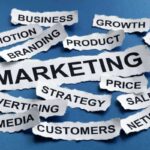As we approach 2025, marketing strategies are shifting at an unprecedented pace. With technological advancements, changing consumer expectations, and a globalized digital landscape, businesses must innovate to stay ahead. The rise of artificial intelligence (AI), data analytics, and immersive technologies such as augmented reality (AR) and virtual reality (VR) is reshaping the way brands connect with consumers.
In this article, we’ll explore the most innovative marketing strategies for 2025 and how businesses can effectively navigate the evolving landscape to maximize engagement, conversion, and customer loyalty.
1. Hyper-Personalization Through AI and Data Analytics
Consumers are no longer satisfied with generic marketing messages. As data becomes more accessible and AI-driven personalization takes the spotlight, delivering tailored content at scale will be essential.
- Predictive Analytics: By analyzing consumer behavior and historical data, AI will allow marketers to predict what content, products, or services their customers are likely to engage with next. Brands can leverage this data to craft personalized offers, recommendations, and campaigns.
- Dynamic Content Delivery: Through machine learning and real-time analytics, brands can adjust content dynamically to match individual preferences. From personalized email subject lines to product recommendations based on past purchases, hyper-personalization will be a game-changer for consumer engagement.
2. Influencer Marketing Evolution: Beyond the Celebrities
Influencer marketing is maturing, and in 2025, it’s not just about partnering with high-profile personalities. Micro and nano-influencers will continue to thrive as consumers seek authentic, relatable content.
- Authenticity Over Popularity: In 2025, trust and authenticity will be crucial. Consumers are increasingly drawn to influencers who feel genuine and connected to their audiences. Brands will prioritize micro-influencers who have highly engaged, niche followings rather than celebrities with broad, yet less engaged audiences.
- AI-Powered Influencer Selection: Brands are already using AI to analyze an influencer’s engagement, authenticity, and audience demographics. As AI tools improve, these technologies will help brands make smarter decisions about influencer partnerships and campaign effectiveness.
3. Immersive Experiences: AR and VR Integration
With the rise of augmented reality (AR) and virtual reality (VR), marketers will be able to offer immersive, interactive experiences that elevate customer engagement.
- Virtual Product Trials: In 2025, AR will enable customers to “try before they buy” in entirely new ways. For instance, consumers will be able to use their smartphones to virtually place furniture in their homes, or try on clothes via virtual fitting rooms, reducing friction in the decision-making process.
- Immersive Storytelling: Through VR, brands can take customers on a fully immersive journey, from virtual tours to interactive experiences. For example, a luxury car brand could allow customers to virtually experience a test drive from their living rooms, making the purchasing process more engaging.
4. Omnichannel Marketing: Seamless Cross-Platform Experience
In 2025, delivering a seamless omnichannel experience will be non-negotiable. Consumers now expect to interact with brands across multiple platforms—social media, websites, email, mobile apps, and even in-store—without encountering disruptions.
- Consistent Branding Across Channels: Brands will focus on creating a consistent message, aesthetic, and experience across all touchpoints. Whether a consumer is shopping on a mobile app, browsing a website, or visiting a physical store, the brand experience should be cohesive.
- Real-Time Cross-Platform Engagement: Omnichannel marketing will allow businesses to engage with customers in real-time across various platforms. For example, a customer may interact with a chatbot on the brand’s website, receive a personalized email later, and then see a targeted ad on social media—all seamlessly coordinated.
5. Voice Search Optimization
As voice assistants become more ubiquitous, voice search optimization will be a key focus for marketers in 2025.
- Conversational Keywords: With the growing use of voice search through devices like Amazon Alexa, Google Assistant, and Apple Siri, marketers will need to optimize their content for natural, conversational queries. Long-tail keywords and direct answers will be increasingly important to match how people ask questions through voice.
- Smart Device Marketing: With smart speakers and voice-enabled devices becoming household staples, marketers will explore new ways to deliver content and drive conversions through these platforms. Brands will need to ensure their services are voice-search-friendly to remain competitive.
6. Sustainability and Ethical Marketing
Consumers, especially Millennials and Gen Z, are becoming more conscious of the ethical practices of the brands they support. Sustainability is no longer a niche concern; it’s a core value for many customers.
- Transparency and Social Responsibility: Brands will need to be more transparent about their business practices, product sourcing, and environmental impact. Eco-friendly initiatives, such as sustainable packaging or carbon-neutral shipping, will play a key role in attracting environmentally-conscious consumers.
- Values-Driven Campaigns: Ethical marketing will involve crafting campaigns that highlight a brand’s commitment to social and environmental causes. Brands that authentically integrate sustainability into their core values will see a significant boost in customer loyalty.
7. Video Marketing Domination
Video is already a dominant format, but in 2025, it will be even more integral to marketing strategies as consumer demand for short-form content increases.
- Short-Form Video: Platforms like TikTok and Instagram Reels have proven that consumers love quick, bite-sized video content. Brands will need to adapt by creating engaging and shareable video content that captures attention within the first few seconds.
- Live Streaming: Live video streaming will continue to grow, allowing brands to interact with their audiences in real-time. From behind-the-scenes looks to product launches and live Q&A sessions, brands can use live streaming to build stronger, more authentic connections with their audience.
8. Marketing Automation: Streamlining Campaigns
In 2025, marketing automation will be crucial for scaling efforts while maintaining personalized, customer-focused communication.
- Automated Email Campaigns: Brands will use AI-driven email marketing to send highly personalized messages at the right time, driving better engagement and conversion rates.
- Workflow Automation: Marketing automation tools will help marketers streamline tasks, manage leads, and analyze performance without requiring constant manual intervention, allowing for greater efficiency and more targeted campaigns.
9. Interactive and Engaging Content
Consumers no longer want to passively consume content—they want to engage with it. In 2025, interactive content will take center stage.
- Quizzes and Polls: Brands will incorporate more interactive quizzes, polls, and surveys into their campaigns to foster engagement and gather valuable customer insights.
- Interactive Videos: Shoppable videos and interactive video ads will continue to grow in popularity, allowing consumers to click on products featured in the video and purchase them directly, making the shopping experience smoother and more engaging.
Conclusion
As we look ahead to 2025, the future of marketing will be defined by innovation, personalization, and data-driven insights. Brands must adapt to new technologies, focus on creating seamless and authentic customer experiences, and engage with consumers in more meaningful ways. AI, immersive technologies, and sustainability will play a crucial role in shaping the marketing landscape of tomorrow.
By staying ahead of these trends and embracing new marketing strategies, businesses can position themselves for success and create lasting connections with their audiences.




